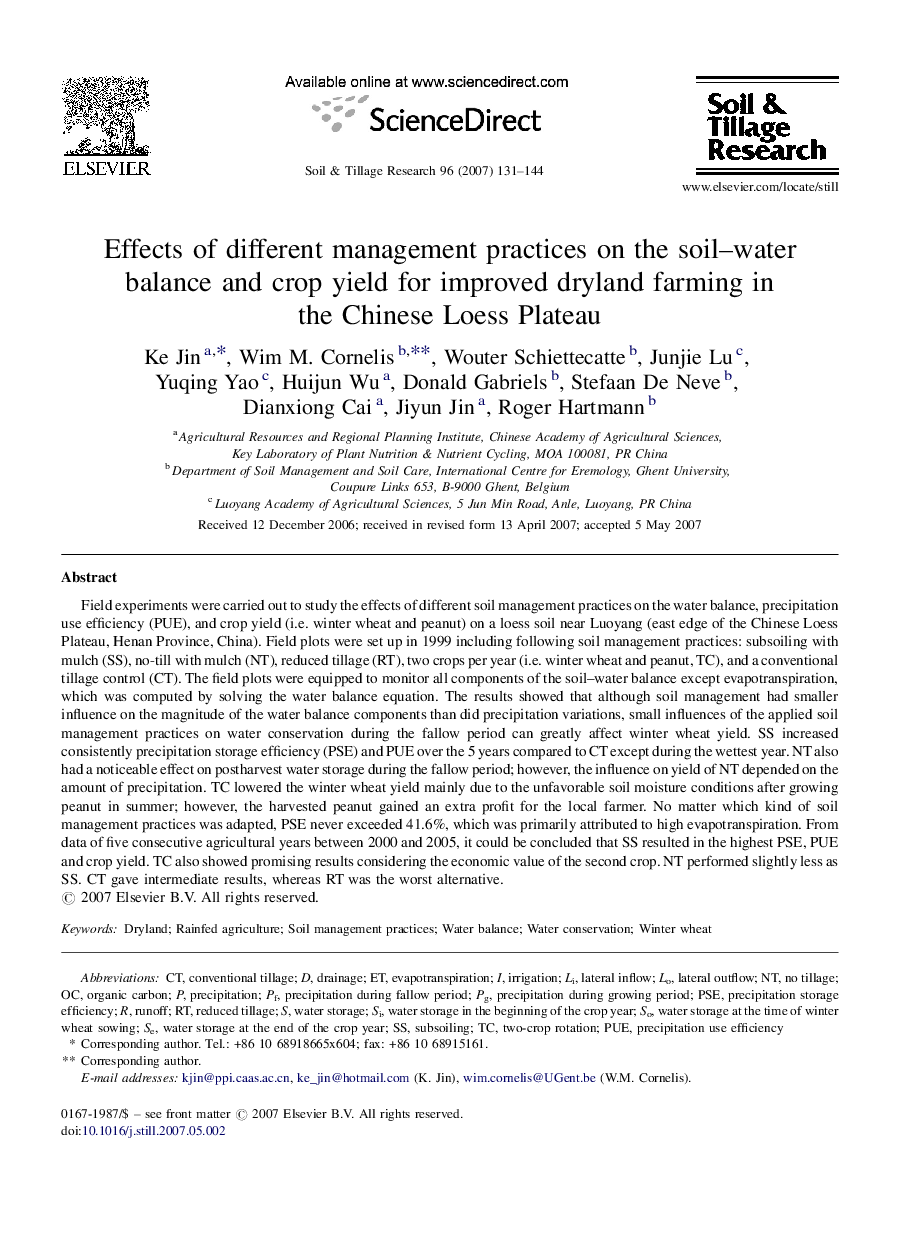| کد مقاله | کد نشریه | سال انتشار | مقاله انگلیسی | نسخه تمام متن |
|---|---|---|---|---|
| 306542 | 513101 | 2007 | 14 صفحه PDF | دانلود رایگان |

Field experiments were carried out to study the effects of different soil management practices on the water balance, precipitation use efficiency (PUE), and crop yield (i.e. winter wheat and peanut) on a loess soil near Luoyang (east edge of the Chinese Loess Plateau, Henan Province, China). Field plots were set up in 1999 including following soil management practices: subsoiling with mulch (SS), no-till with mulch (NT), reduced tillage (RT), two crops per year (i.e. winter wheat and peanut, TC), and a conventional tillage control (CT). The field plots were equipped to monitor all components of the soil–water balance except evapotranspiration, which was computed by solving the water balance equation. The results showed that although soil management had smaller influence on the magnitude of the water balance components than did precipitation variations, small influences of the applied soil management practices on water conservation during the fallow period can greatly affect winter wheat yield. SS increased consistently precipitation storage efficiency (PSE) and PUE over the 5 years compared to CT except during the wettest year. NT also had a noticeable effect on postharvest water storage during the fallow period; however, the influence on yield of NT depended on the amount of precipitation. TC lowered the winter wheat yield mainly due to the unfavorable soil moisture conditions after growing peanut in summer; however, the harvested peanut gained an extra profit for the local farmer. No matter which kind of soil management practices was adapted, PSE never exceeded 41.6%, which was primarily attributed to high evapotranspiration. From data of five consecutive agricultural years between 2000 and 2005, it could be concluded that SS resulted in the highest PSE, PUE and crop yield. TC also showed promising results considering the economic value of the second crop. NT performed slightly less as SS. CT gave intermediate results, whereas RT was the worst alternative.
Journal: Soil and Tillage Research - Volume 96, Issues 1–2, October 2007, Pages 131–144